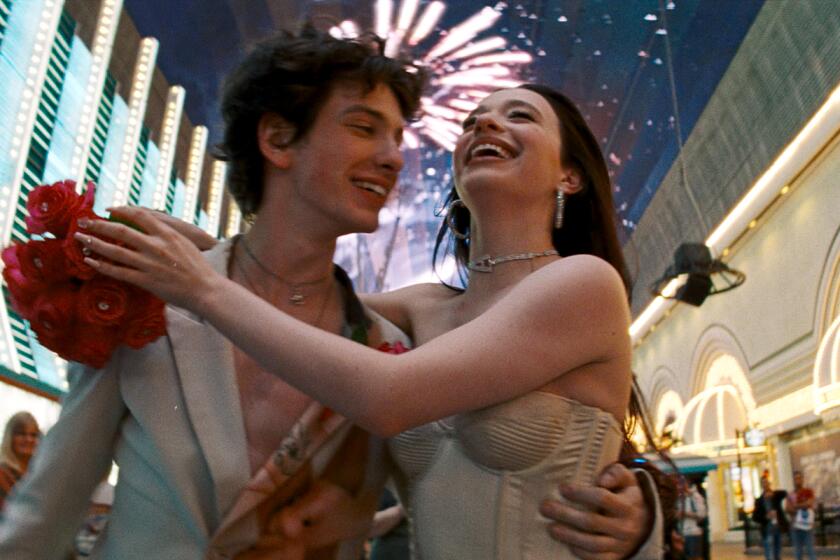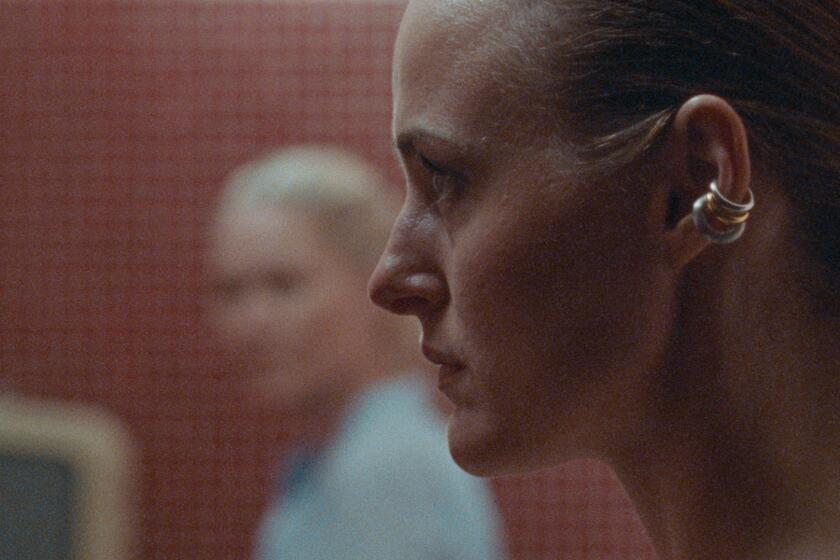Personal Films Dig Deeper at Ground Zero
- Share via
After the World Trade Center fell, Jay Rosenblatt and Caveh Zahedi felt as if their usual creative obsessions as independent filmmakers suddenly didn’t amount to a hill of beans.
Zahedi had been shooting “I Am a Sex Addict,” the latest in his series of features that focus on funny but disquieting episodes from his life. “I was feeling pretty absurd trying to make that film, and we were heading for World War III,” he recalled. “It didn’t seem very relevant.”
Rosenblatt, his friend and a fellow San Franciscan, had been trying to get grants to make more of the distinctive, emotionally charged “collage-essays” he cobbles together from stock footage.
“Like everyone else, I was completely upset,” Rosenblatt says about his reaction to 9/11. “The projects I was working on just lost a lot of their meaning.”
The two talked about how unfocused they felt and how troubled they were by what they saw as a monolithic, jingoistic mass-media portrayal of the disaster and its aftermath. “We thought about channeling our feelings into something creative, something cathartic,” Rosenblatt recalled in a recent phone conversation. Then it occurred to them that their peers must be experiencing the same disequilibrium.
By Sept. 25 they had e-mailed a letter to more than 100 independent filmmakers they respected, proposing a compilation of short, personal films responding to the disaster. “A collective response can be more powerful and effective than isolated individual responses,” they wrote.
The result, “Underground Zero,” makes its Southern California premiere this afternoon with a free showing at the UC Irvine Human Rights Film Festival. Rosenblatt and Zahedi culled its 13 films, totaling 76 minutes, from the 65 submissions they received. The compilation has been making the rounds at film festivals; art-film houses in San Francisco, San Rafael and Berkeley recently screened it simultaneously for a week. Rosenblatt and Zahedi are trying to negotiate a distribution deal and possible cable television showings. The curators and co-producers have covered their out-of-pocket costs--about $5,000--by securing foundation grants; they say any proceeds will go to nonprofit organizations that work for world peace.
The rule for contributors was to work fast and cheap, with a submission deadline of Jan. 1. Zahedi said that precluded trying for name film directors--except for the small handful he and Rosenblatt knew personally. “It would have been a lot of work trying to track them down and get them to know us. We didn’t have the energy or time.”
The most above-ground of the “Underground Zero” contributors are Rob Epstein and Jeffrey Friedman, a documentary team that individually and collectively has won several Emmys and two Oscars (for “Common Threads: Stories From the Quilt” and “The Times of Harvey Milk” ). Their film, “Isaiah’s Rap,” shows Epstein’s 14-year-old nephew, who lives near ground zero, pointing out the gap in his neighborhood’s skyline, then delivering an emotional rhymed eulogy for the victims.
The compilation begins with “The End of Summer,” which depicts tranquil suburban scenes while a sweet-voiced, unseen little girl tries to ponder what happened on Sept. 11. “I think maybe [the attackers] were like the Grinch and didn’t have a good heart.” It ends with “Untitled,” a stark, wordless and captionless montage of faces that only the context reveals as victims of the disaster. Some pieces are politically pointed; others appeal to the emotions rather than the intellect.
Zahedi, who habitually films his own life, came up with a true-life morality play from footage of a film course he was teaching last fall. “The World Is a Classroom” depicts how he came to loggerheads with a student who refused to be part of the movie he was trying to make. Zahedi antagonized the man by trying to exert his authority; it took a concession on his part, a sincere plea and an apology, to end the disruptive power struggle.
“He needed respect. He felt shamed,” said Zahedi, who was raised in a nonreligious home by Iranian Muslim immigrants. “I think that’s what the Moslems in the world who hate America are feeling.”
Rosenblatt combed his extensive film archive and was struck by the similarity between footage he had of Arabs bowed in worship, and a 1950s civil defense film demonstrating how to “duck and cover” during a nuclear attack. That inspired “Prayer,” which he capped with a shot of the Statue of Liberty hemmed in by dark clouds.
“That [last image] was very important to me because I feel like the values of this country are under assault, from within as much as from without,” he said. “Also, [it gives] the sense of ‘still standing’ even though the towers have come down, a sense of standing up to what needs to be stood up to.”
The curators say that a number of filmmakers submitted works showing the destruction in New York. But the compilation’s only images of collapsing towers and dazed, fleeing people are flickering on Chinese television screens in “China Diary (9/11),” New Yorker Eva Ilona Brzeski’s account of what it was like to be a world away from home when disaster struck.
“Our program is more interpretive and a lot less journalistic,” Rosenblatt says. “I just hope it stimulates some good discussion and debate, and hopefully opens some people’s eyes more.”
“Underground Zero” screens for free today at 4 p.m. in Room 110 of the Humanities Instructional Building on the UC Irvine campus. Use the Pereira parking lot, Pereira Drive at West Peltason. (949) 824-7418.
More to Read
Only good movies
Get the Indie Focus newsletter, Mark Olsen's weekly guide to the world of cinema.
You may occasionally receive promotional content from the Los Angeles Times.











